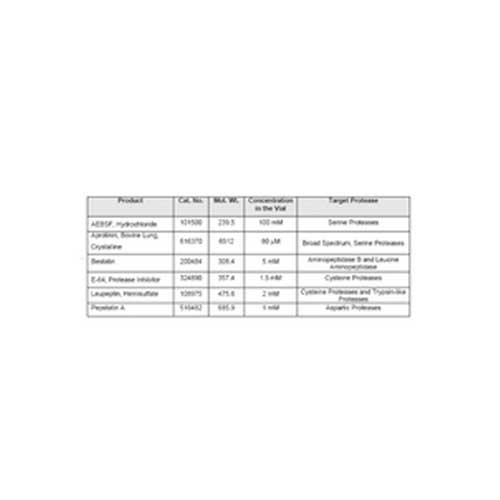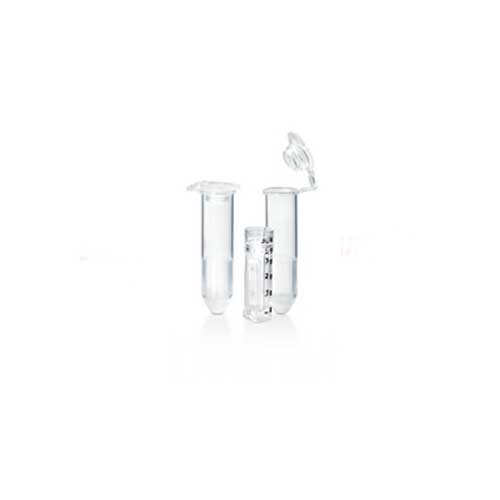(Ref: 20-188) RIPA Lysis Buffer, 10X, 100ml
RM661.00Brand:
Merck
Description
100 mL RIPA Lysis Buffer, 10X for Immunoprecipitation & Western Blotting.
Key applications:
– immunoprecipitation
– western blotting

Affinity purification tools
Price range: RM4,382.00 through RM4,408.00Brand:
Merck
Description
Merck Millipore offers a wide range of tools for protein purification, including affinity magnetic beads and affinity agarose resins.
• PureProteome™ magnetic beads are ideal for small volume affinity purification assays, such as
immunoprecipitation and serum depletion or enrichment.
• Affinity agarose portfolio for larger volume applications, such as antibody purification and recombinant
protein purification
Amicon® Ultra Filter
Price range: RM773.00 through RM1,739.00Brand:
Merck
Description
Applications Include:
Concentration of biological samples containing antigens, antibodies, enzymes, nucleic acids, or microorganisms.
Purification of macromolecular components found in tissue culture extracts or cell lysates.
Primer removal, PCR cleanup, removal of linkers or macromolecular labels from a reaction mix, and protein removal prior to HPLC.
Desalting, buffer exchange and protein dialysis.

Anti-acetyl-Histone H3 (rabbit polyclonal)
RM3,116.00Brand:
Merck
Description
Histone H3 is one of the five main histone proteins involved in the structure of chromatin in eukaryotic cells. Featuring a main globular domain and a long N-terminal tail, H3 is involved with the structure of the nucleosomes of the ‘beads on a string’ structure. The N-terminal tail of histone H3 protrudes from the globular nucleosome core and can undergo several different types of epigenetic modifications that influence cellular processes. These modifications include the covalent attachment of methyl or acetyl groups to lysine and arginine amino acids and the phosphorylation of serine or threonine. Acetylation of histone H3 occurs at several different lysine positions in the histone tail and is performed by a family of enzymes known as Histone Acetyl Transferases (HATs). Acetylation of lysine14 is commonly seen in genes that are being actively transcribed into RNA. Research focus area: Epigenetics.
Key Applications:
-Western Blotting
-Immunocytochemistry
-ChIP-seq
-Chromatin Immunoprecipitation (ChIP)
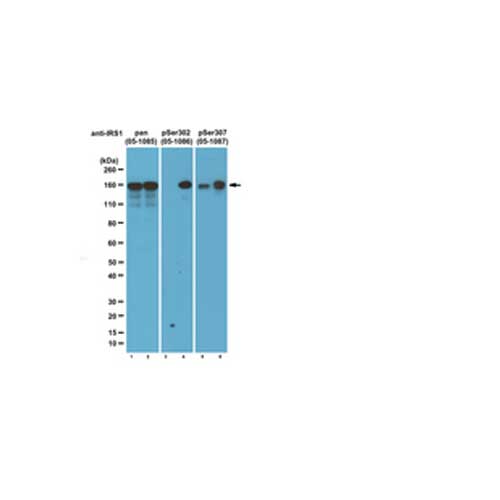
Anti-Actin, clone C4 (mouse monoclonal)
RM2,258.00Brand:
Merck
Description
Actin is an abundant cytoskeletal protein found in all cells (True, 1990). The protein’s 42 kD peptide chain assumes two physical forms: globular actin, which may serve as a cytoplasmic storage pool, and fibrous actin, which, in conjunction with myosin, generates muscle contraction (True, 1990). In non-muscle cells, actin appears to be involved in a variety of functions, such as cell motility, exocytosis, and phagocytosis (True, 1990). Distribution of the six known isoforms of actin – four muscle actins (alpha-skeletal, alpha-vascular smooth, alpha-cardiac, and gamma-enteric smooth) and two cytoplasmic actins (alpha and gamma) is tissue specific (Otey, 1986; Lessard, 1988). Research focus area: Cell Structure
Key Application:
-ELISA
-Immunocytochemistry
-Immunofluorescence
-Immunohistochemistry
-Immunohistochemistry (Paraffin)
-Western Blotting
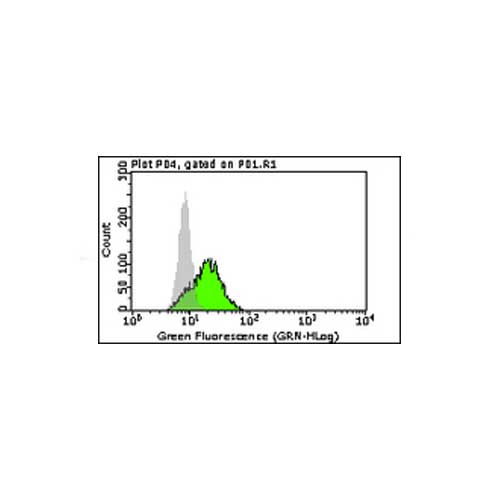
Anti-Glutamate Receptor 2, extracellular, clone 6C4, Alexa Fluor® 488 Conjugate
RM2,605.00Brand:
Merck
Description
Glutamate receptors (GluRs) can be categorized as ionotropic or metabotropic and subcatergorized by their agonist preferences (NMDA, AMPA or Kainic acid). There are four types of AMPA selective GluR subunits (GluR1, GluR2, GluR3 and GluR4). Tetrameric or pentameric combinations of different subunits contributes to the functional diversity of AMPA receptors. In general, AMPA receptors mediate fast synaptic current at most excitatory synapses, with stoichiometry characterized by subtype composition. Although subunit composition of AMPA receptors varies, they must contain at least one edited GluR2 subunit to be calcium impermeable. The critical residue controlling calcium permeability is in the pore loop region. In GluR1, GluR3, and GluR4, this positionis occupied by a Gln residue. In GluR2, it is occupied by an Arg residue. It has been shown experimentally that the presence of Arg in this position blocks CA2+ ion permeability, while a Gln does not. Relative calcium permeability in AMPA receptor channels may be significant in pathological neurotoxic damage and long term changes in nervous system responses. Research focus area: Neuroscience
Key Applications:
-ELISA
-Immunocytochemistry
-Immunohistochemistry
-Immunoprecipitation
-Radioimmunoassay
-Western Blotting

Anti-IRS1, clone 4.2.2 (mouse monoclonal)
RM2,416.00Brand:
Merck
Description
IRS1 (Insulin Receptor Substrate 1) transmits insulin signals via metabolic and mitogenic pathways. IRS1 is heavily phosphorylated on both serine and tyrosine residues. These phosphorylated tyrosines enable IRS to act as a docking protein that binds SH2 domains of such proteins as PI3 Kinase (phosphatidylinositol 3-kinase) and GRB2, resulting in activation. Over expression and phosphorylation of serine is associated with insulin resistance and breast cancer. Some of the more notable phosphorylation sites are Ser302 that is phosphorylated following insulin stimulation. Ser307, phosphorylated by JNK and IKK, is a key regulatory site that appears to disrupt the IRS1/IR interaction and inhibits insulin-mediated activation of the PI3 kinase and MAPK pathways, and Ser636/639 that is known to be phosphorylated by p70S6K downstream of mTOR and acts as a negative feedback loop. Research focus area: Signaling
Key Applications:
-Western Blotting
-Immunoprecipitation
-Immunocytochemistry
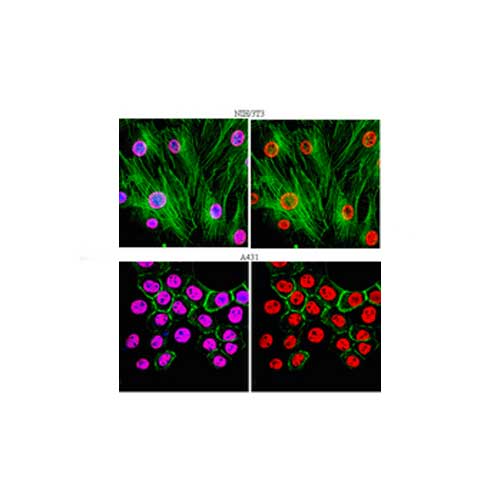
Anti-p62 (Sequestosome-1), clone 11C9.2 (mouse monoclonal)
RM1,603.00Brand:
Merck
Description
p62 is also known as sequestosome-1, and is a 62 kDa ras-GAP associated protein. p62 is thought to bind to src-family tyrosine kinases and may also provide a linker action for activated src-family kinases with their downstream effectors. p62 has an RNA-binding region and may have RNA-binding ability. p62 is associated with activation of transcription factor NF-κB, involved in cell differentiation, immune response and potassium channel regulation. p62 has recently been linked to extrinsic apoptosis and may be a key player in tumorigenesis. Research focus area: Cancer.
Key Applications:
-Western Blotting
-Flow Cytometry
-Immunocytochemistry
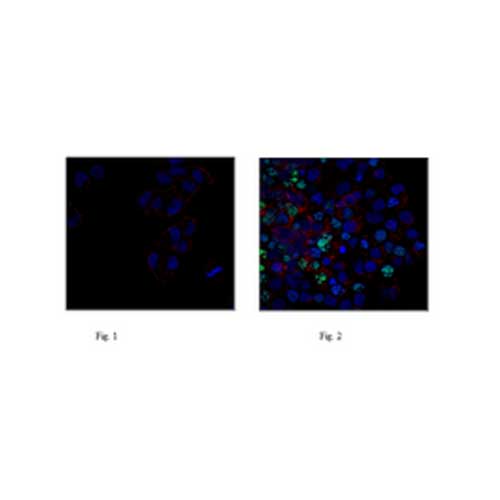
Anti-phospho Histone H2A.X (Ser139), clone JBW301, Alexa Fluor® 488 Conjugate
RM2,808.00Brand:
Merck
Description
Histone H2A.X is a variant of histone H2A, and is similarly associated with genomic DNA. However, histone is structurally different from other members of the H2A family in possessing a C-terminal tail that contains the Ser139 residue that is phosphorylated in response to breaks in double-stranded DNA. The phosphorylation of H2A.X is a rapid process that is mediated by ATM/ATR proteins.

Anti-phospho Histone H2A.X (Ser139), clone JBW301, Alexa Fluor® 647 Conjugate
RM2,663.00Brand:
Merck
Description
As a member of the histone H2A family, histone H2A.x (H2A.x) is a variant histone H2A which replaces conventional H2A in a subset of nucleosomes. H2A.x is involved in the DNA repair of double-strand breakage (DSB) damage on nuclear DNA. After a double strand DNA break, H2A.x is rapidly phosphorylated at serine 139 by ATM kinase and becomes gamma-H2AFX. This phosphorylation step can extend up to several thousand nucleosomes from the actual site of the DSB and may mark the surrounding chromatin for recruitment of proteins required for DNA damage signaling and repair. As a part of posttranslational modifications during apoptosis caused by severe DNA damage, high expression of phosphorylated H2A.x is considered as an accurate indicator of apoptosis.
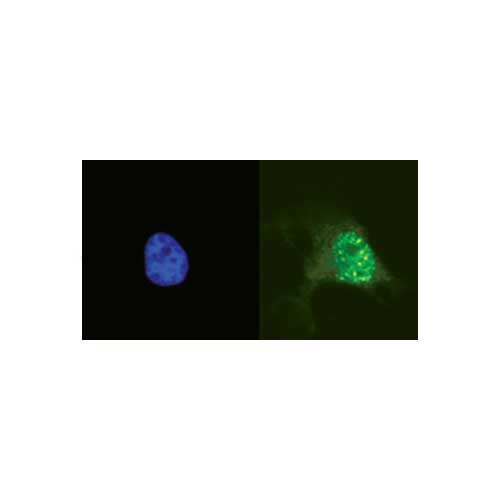
Anti-phospho-Histone H2A.X (Ser139), clone JBW301 (mouse monoclonal)
RM3,177.00Brand:
Merck
Description
Histone H2A is one of the 5 main histone proteins involved in the structure of chromatin in eukaryotic cells. Featuring a main globular domain and a long N terminal tail H2A is involved with the structure of the nucleosomes of the ‘beads on a string’ structure
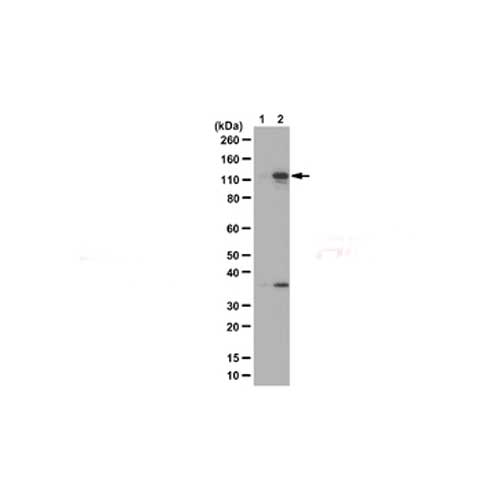
Anti-phospho-MYPT1 (Thr696) Antibody
RM0.00Brand:
Merck
** This product has been discontinued, please contact us for more information.
Description
Myosin phosphatase target subunit 1 (MYPT1), also called Myosin-binding subunit of Myosin phosphatase, is one of the subunits and an integral component of the Myosin phosphatase. Myosin phosphatase regulates the interaction of Actin and Myosin downstream of the guanosine triphosphatase Rho, which inhibits Myosin phosphatase through the action of Rho-kinase. It is also involved in smooth muscle contraction. Inhibition of Myosin light chain phosphatase results in Ca2+ sensitization of smooth muscle contraction. This inhibition is modulated through phosphorylation of MYPT1 by a ZIP-like kinase, which associates with MYPTI and phosphorylates the inhibitory site in smooth muscle. The phosphorylation of MYPT1 by protein kinase C results in altered dephosphoryation of Myosin by attenuating the binding of protein phosphatase 1 catalytic subunit (PP1c) and the phosphorylated 20 kDa Myosin light chain to MYPT1. PP1c interacts with at least four binding sites on the amino-terminus of MYPT1. MYPT1 is localized on stress fibers, and is distributed close to the cell membrane and at cell-cell contacts to regulate Myosin phosphatase activity.

BugBuster® Protein Extraction Reagent
Price range: RM1,385.00 through RM3,648.00Brand:
Merck
Description
Protein stability is fundamental to all aspects of protein research, including analysis by Western blotting. Combine our gentle protein extraction kits with protease inhibitors to obtain stabilized, intact and active proteins.
BugBuster® Master Mix combines BugBuster Protein Extraction Reagent with Benzonase®Nuclease and rLysozyme™ Solution in one convenient reagent. BugBuster Master Mix allows for maximum recovery of active soluble protein from both Gram-negative and Gram-positive bacteria. With the Master Mix, there is no need for dilution or separate addition steps. The two available package sizes provide sufficient reagents for protein extraction from 20 g and 100 g cell paste.

Chymostatin (Microbial Streptomyces), 100 mg
RM4,547.00Brand:
Merck
Description
Chymostatin. M.W. 604.92
Mixture of types A, B and C. Inhibits Chymotrypsin-like serine proteases including alpha, beta, gamma and delta chymotrtrypsins.
Sequence:
[(S)-1-Carboxy-2-Phenylethyl]-Carbamoyl-a-[2-Iminohexahydro-4(S)-Pyrimidyl]-(S)-Glycyl-X-Phenylalaninal
X: L-Leu (type A), L-Ile (type B), L-Val (type C)
Working concentrations 10-100μM.
5mg/825 microliters in DMSO = 10mM solution.
Dilute 1:100 for 100μM working solution.
Lyophilized. Dissolve in dimethylsulfoxide (DMSO). After powder is thoroughly dissolved, dilute the DMSO solution with 0.9% NaCl. The concentration of DMSO should be maintained at 10% or higher. Otherwise chymostatin may precipitate from the solution.
Maintain lyophilized material at -20ºC for up to one year. Store reconstituted product in aliquots at -20ºC for up to 3-4 weeks. Do not thaw and refreeze.
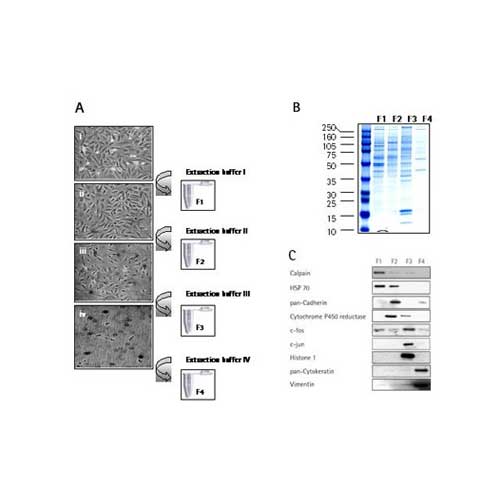
CytoBuster® Protein Extraction Reagent (for mammalian cell lysis)
RM487.00Brand:
Merck
Description
The CytoBuster™ Protein Extraction Reagent is a proprietary formulation of detergents optimized for efficient extraction of soluble proteins from mammalian and insect cells. The gentle, non-ionic composition of CytoBuster Protein Extraction Reagent enables isolation of functionally active endogenous or expressed proteins without a need for secondary treatment such as sonication or freeze/thaw. CytoBuster Protein Extraction Reagent has been specifically formulated for utilization in Western blotting, immunoprecipitation, and kinase/phosphatase assays. The reagent is compatible with protease inhibitors, kinase inhibitors, and phosphatase inhibitors.

D-Tube™ Dialyzer Mini, Midi, Maxi and Mega
Price range: RM680.00 through RM3,137.00Brand:
Merck
Description
The D-Tube™ Dialyzers be used for dialysis and electroelution of proteins, RNA, DNA, and oligonucleotides from polyacrylamide or agarose gels. The disposable, single-use tubes require no syringes, microcentrifuge, or laborious steps to manipulate small sample volumes. The sample is added and removed using a standard laboratory pipet. Available with molecular weight cutoffs (MWCO) from 3.5 to 14 kDa, the D-Tube Dialyzers are designed in four volume capacities: mini (10-250 µl), midi (50-800 micro;l), maxi (100-3000 µl), and mega (10ml, 15ml, and 20 ml). The membrane is ultra-clean, EDTA-treated regenerated cellulose, sulfur- and heavy metal-free.
The D-Tube Dialyzers Mini, Midi, and Maxi contain 10 D-Tube Dialyzers and one floating rack that can hold up to four D-Tube Dialyzers. The D-Tube Dialyzers Mega contain 10 or 50 tubes and one or 5 floating racks to hold one D-Tube Mega in the exchange buffer.
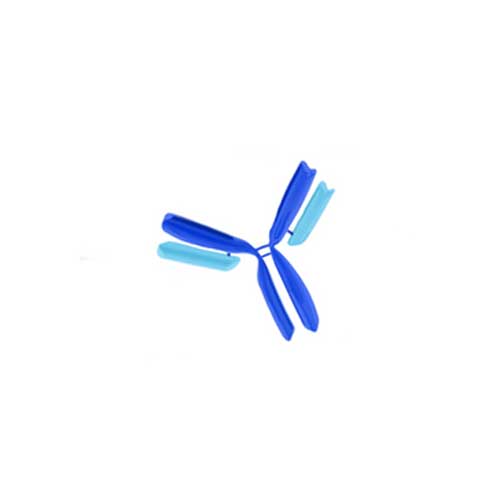
Goat anti-Mouse, FITC conjugate
RM1,010.00Brand:
Merck
** This product has been discontinued.
Description
Immunoglobulin G (IgG) is a multimeric immunoglobulin, built of two heavy chains γ and two light chains. Each complex has two antigen binding sites. It is one of the most abundant proteins in human serum with normal levels between 8-17 mg/ml in adult blood. IgG is important for our defense against microorganisms and the molecules are produced by B lymphocytes as a part of our adaptive immune response. The IgG molecule has two separate functions; to bind to the pathogen that elicited the response and to recruit other cells and molecules to destroy the antigen. Furthermore, this is the only isotype that can pass through the human placenta, thereby providing protection to the fetus in its first weeks of life before its own immune system has developed. The variability of the IgG pool is generated by somatic recombination and the number of specificities in an individual at a given time point is estimated to be 1011 variants.
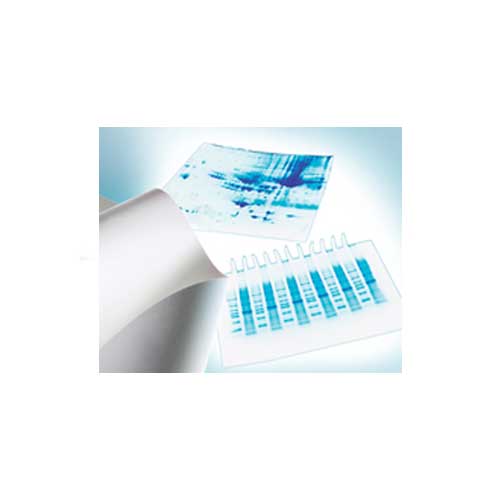
Immobilon-P PVDF Membrane, 0.45 µm
Brand:
Merck
Description
Immobilon-P Transfer Membrane:
- 45 µm pore size Recommended for most western blotting, especially proteins greater than 20 kDa
- Millipore’s Rapid Immunodetection Protocol reduces detection times by up to 2 hours by eliminating membrane blocking and several wash steps with no loss of sensitivity or specificity
Features & Benefits:
- Won’t crack, curl or fracture when cut
- Low background
- Superior staining capabilities
- Can be reprobed multiple times
Applications:
- Western Blotting, Immunoblotting, Dot Blotting, Protein Sequencing;
- Compatible with Chemiluminescent, Fluorescent, Radioactive, Chromogenic, and Chemifluorescent Detection
- Compatible with all commonly used fluorescent probes at all excitation and emission wavelengths

Immobilon® Block
Brand:
Merck
Description
Immobilon® Block Noise Cancelling Reagents are designed especially for Western blotting applications. This family of protein-free, ready-to-use buffers has been optimized to reduce background levels when using chemiluminescence, fluorescent, or phosphotyrosine detection. Bløk buffers are ideal for use with Immobilon®-P Western blotting membranes and the SNAP i.d.® system, and are also compatible with standard Western blotting techniques.

Immobilon®-FL Membrane, 0.45 µm
Brand:
Merck
Description
Immobilon-FL Membrane:
– The first transfer membrane optimized for fluorescence applications
– Extremely low background improves sensitivity of all fluorescence detection protocols
– Compatible with all commonly used fluorescent probes at all excitation and emission wavelengths
– Ideal for multiplexing and chemifluorescence applications
Features & Benefits:
– Won’t crack, curl or fracture when cut
– Low background
– Superior staining capabilities
– Can be reprobed multiple times
Applications:
– Western Blotting, Immunoblotting, Dot Blotting, Protein Sequencing;
– Compatible with Chemiluminescent, Fluorescent, Radioactive, Chromogenic, and Chemifluorescent Detection
– Compatible with all commonly used fluorescent probes at all excitation and emission wavelengths
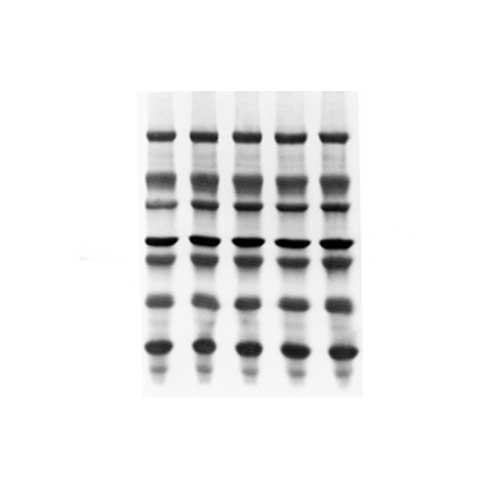
Immobilon®-PSQ PVDF Transfer Membrane, 0.2 µm
Brand:
Merck
Description
Immobilon-PSQ Membrane:
– 0.2 µm pore size and a large internal structure
– Higher protein adsorption and sequencing yields than other membranes
– Recommended for blotting proteins less than 20 kDa
– Prevents blow-through of low molecular weight proteins
Features & Benefits:
– Won’t crack, curl or fracture when cut
– Low background
– Superior staining capabilities
– Can be reprobed multiple times
Applications:
– Western Blotting, Immunoblotting, Dot Blotting, Protein Sequencing;
– Compatible with Chemiluminescent, Fluorescent, Radioactive, Chromogenic, and Chemifluorescent Detection
– Compatible with all commonly used fluorescent probes at all excitation and emission wavelengths
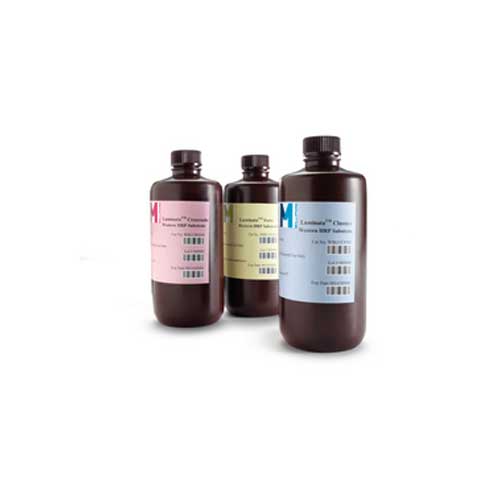
Immobilon™ Western HRP Substrate
Brand:
Merck
Description
Chemiluminescent HRP* substrates (also known as ECL reagents) are the most sensitive reagents used in the detection of Western blots. The Immobilon™ Western HRP Substrates are a family of three premixed HRP substrates, which offer several advantages over other detection reagents.
Key Application:
Western Blotting
Leupeptin, 100 mg
RM1,624.00Brand:
Merck
Description
Leupeptin is an organic compound produced by actinomycetes, serine and cysteine proteases reversibly. Inhibits trypsin-like proteases and some cysteine proteases including endoproteinase Lys-C, Kallikrein, papain, thrombin, cathepsin B and trypsin.
MW:426.56 s 49.04 . 18.02 {C20H36N6O4 . ½H2SO4 . H2O}
Ac-Leu-Leu-Argininal (hemi-sulfated form). Thus material has three tautomeric isomers that can be visualized by chromatography.
Appearance: White amorphous powder
Working range 10-100μM. Stable for several hours in water. Stock solutions of 10mM in water are stable for 1 week at 4ºC and 6 months at -20ºC.
5mg/1.054 mL = 10mM. Typically dilute 1:100 for a 100μM working solution.
Source: Organic isolated from actinomycetes.
Maintain dry at -20ºC for up to 18 months after date of receipt. Store reconstituted product in aliquots at -20ºC for up to 6 months. Avoid repeated thaw freeze cycles.

ProteoExtract® Native Membrane Protein Extraction Kit
RM2,985.00Brand:
Merck
Description
A convenient kit for the isolation of native integral membrane and membrane-associated proteins, without the need for ultracentrifugation. Extraction is based on association of proteins with cellular membranes rather than on their hydrophobicity. Resulting samples are suitable for use in functional assays, 2-D gel electrophoresis, and other applications.
Note: 1 kit is sufficient for up to 20 sample extractions.

